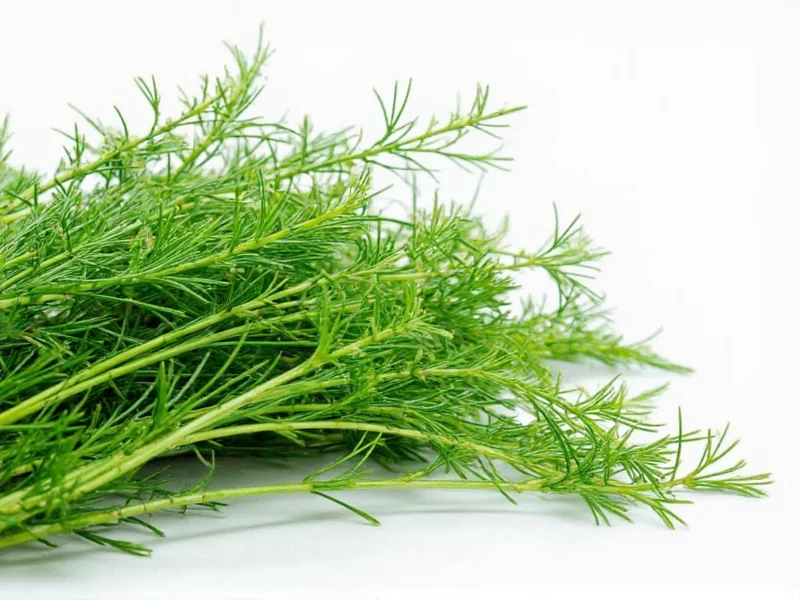Understanding herb substitutions can transform your cooking experience when you're missing a specific ingredient. Dill seed and dill weed come from the same plant (Anethum graveolens), but their flavor profiles differ significantly due to harvesting at different growth stages. This comprehensive guide explains exactly how to navigate this common kitchen dilemma while maintaining recipe integrity.
Understanding the Fundamental Differences
Dill weed refers to the feathery green leaves of the dill plant, typically harvested before flowering. Dill seed comes from the mature plant after it has flowered and produced seeds. This lifecycle difference creates distinct flavor characteristics that impact substitution success.
| Characteristic | Dill Weed | Dill Seed |
|---|---|---|
| Flavor Profile | Fresh, grassy, delicate anise notes | Stronger, more pungent, citrusy with caraway undertones |
| Intensity | Milder | 3-4 times stronger |
| Best Used In | Fish dishes, salads, creamy sauces, egg dishes | Pickling, breads, hearty stews, potato salads |
| Substitution Ratio | 1 tablespoon = 1 teaspoon dill seed | 1 teaspoon = 1 tablespoon dill weed |
When Substitution Works Best
Certain recipes handle the dill seed for dill weed substitution more successfully than others. Understanding these contexts prevents flavor imbalances in your dishes.
Ideal Applications for Dill Seed Substitution
- Pickling recipes - Dill seed actually enhances traditional pickles and is often preferred over dill weed
- Bread and baked goods - The stronger flavor holds up well during baking
- Hearty stews and soups - Robust dishes can balance dill seed's intensity
- Marinades for strong meats - Works well with lamb, pork, or beef
When to Avoid Substitution
Some dishes require the delicate flavor of dill weed that dill seed cannot replicate. Avoid substitution in:
- Fish dishes where subtle herb notes are essential
- Fresh salads and vinaigrettes
- Creamy dill sauces and dips
- Egg salads where fresh dill flavor shines
Perfecting Your Substitution Technique
Successful substitution requires more than just adjusting quantities. Consider these professional techniques for optimal results:
Proper Measurement Adjustments
The standard conversion ratio is 1 teaspoon of dill seed for every 1 tablespoon of dill weed required. However, this isn't absolute—taste as you go! Start with half the recommended substitution amount, then adjust to your preference. Remember that dried dill weed has already lost some potency compared to fresh, making the substitution ratio different than fresh-to-seed conversions.
Flavor Balancing Strategies
When using dill seed as a substitute, consider these complementary adjustments:
- Add a squeeze of lemon to brighten flavors and counter dill seed's earthiness
- Include a pinch of sugar to balance the stronger flavor profile
- Reduce other strong spices by 25% to prevent flavor competition
- Toast dill seeds lightly before use to mellow their intensity
Alternative Substitutes When Neither Is Available
If you lack both dill seed and dill weed, these alternatives can work in a pinch:
- Fennel seeds (use 3/4 amount) - Similar anise notes but sweeter
- Tarragon (use 1:1 ratio) - Closest fresh herb substitute
- Dill pickle juice (1-2 tablespoons) - For liquid-based recipes
- Caraway seeds (use half amount) - Similar flavor profile but stronger
Storage Tips for Maximum Freshness
Proper storage extends the shelf life of both forms, ensuring better substitution results when needed:
- Dill seed maintains potency for 3-4 years when stored in an airtight container away from light
- Dried dill weed lasts 1-2 years under similar conditions
- Freeze dried dill weed in ice cube trays with olive oil for ready-to-use portions
- Crush dill seed just before use to release maximum flavor
Recipe-Specific Substitution Guidance
Tailoring your substitution to specific dishes yields the best results:
Pickling Projects
Dill seed actually outperforms dill weed in traditional pickling. Use whole seeds rather than ground for authentic texture. The standard ratio works perfectly here—1 teaspoon dill seed replaces 1 tablespoon dill weed.
Cucumber Salad
For fresh cucumber salads, dill seed substitution requires careful handling. Use only 1/2 teaspoon dill seed per tablespoon called for, and add after other ingredients to prevent overpowering the delicate flavors.
Salmon Dill Sauce
In creamy sauces for fish, dill seed substitution is challenging. If necessary, use 1/4 teaspoon dill seed per tablespoon required, and add fresh lemon zest to brighten the flavor profile.











 浙公网安备
33010002000092号
浙公网安备
33010002000092号 浙B2-20120091-4
浙B2-20120091-4